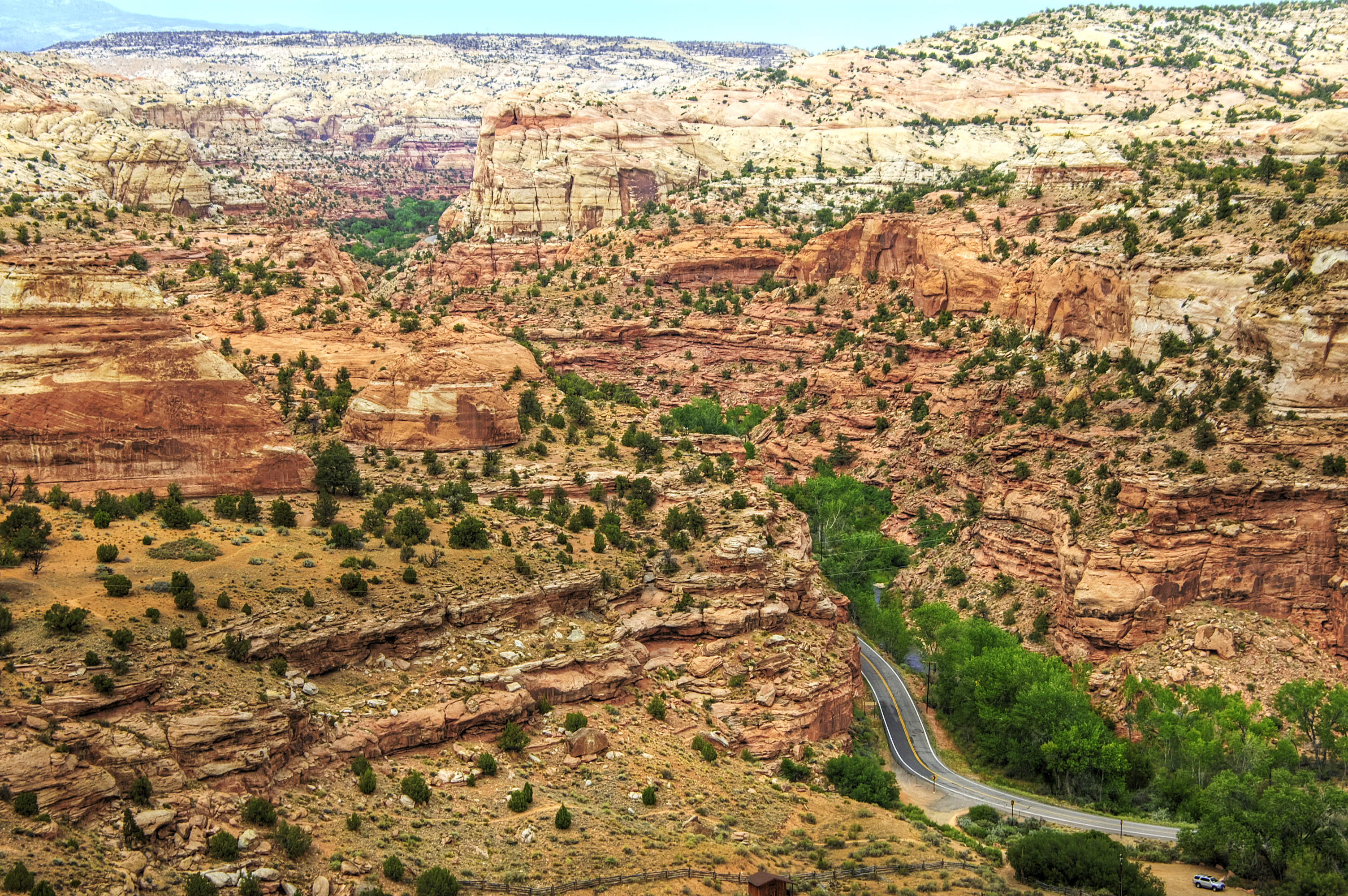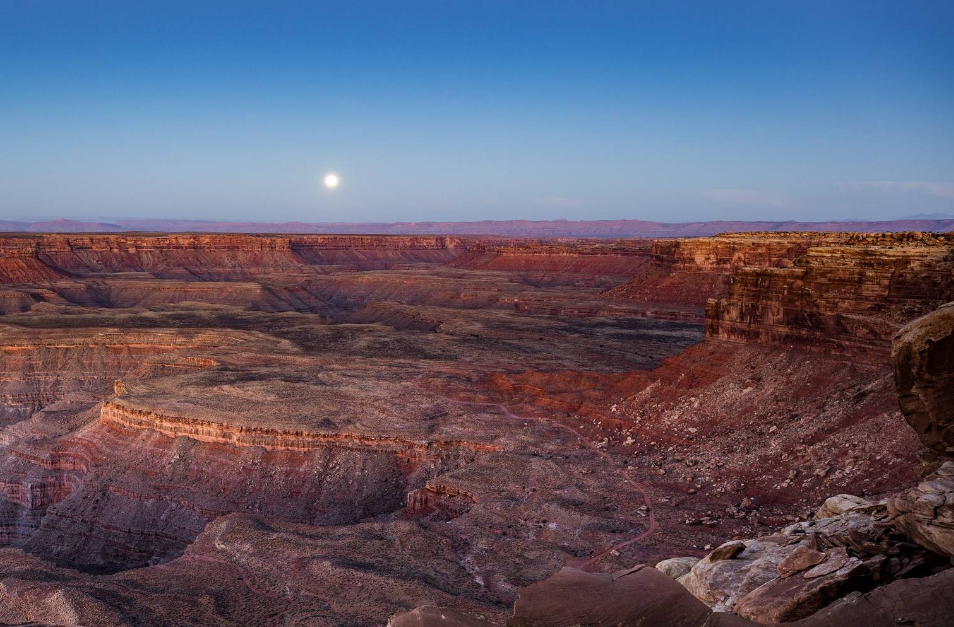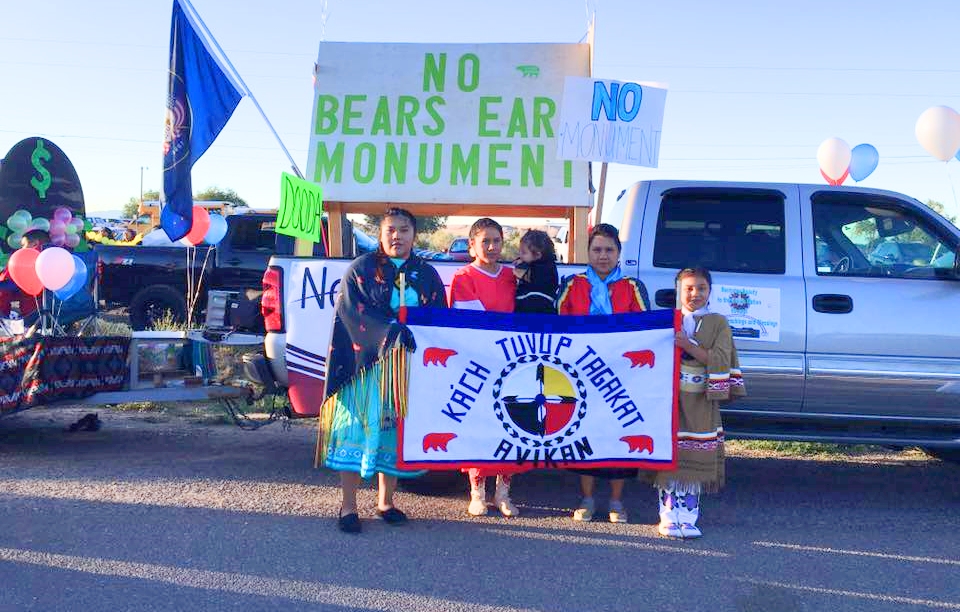Pollock told me he thinks nothing hurt the land more than the monument designation. The U.S. Bureau of Land Management already managed the area, conducting vegetation treatments, water improvements, and soil erosion projects. The agency cooperated fairly well with locals, from ranchers who wanted to graze livestock or residents of nearby Bryce Valley who gathered scrap wood to heat their homes in the winter.
Harvest Prude
The Wealth of the Land
Federal agencies and local governments wrestle with how to best steward Utah’s rich natural resources
WASHINGTON—When President Donald Trump moved to reduce the size of Bears Ears National Monument in southeastern Utah, locals breathed a sigh of relief. The Obama administration’s designation of the area as a national monument in 2016 brought an influx of visitors the region didn’t have the infrastructure to handle.
“No restrooms, no kiosks to tell people which trail to take or whether or not to stay on a trail or get off. No information on how to visit a cultural site,” said Bruce Adams, a San Juan County, Utah, commissioner who chairs the Bears Ears National Monument Advisory Committee. He told me stories of visitors getting stuck crossing seasonal creeks, picking up arrowheads or other artifacts without realizing it was illegal, and getting lost without clear maps.
In 2017, Trump announced plans to decrease the size of the Bears Ears monument by about 85 percent and to cut the almost 2-million-acre Grand Staircase–Escalante National Monument in southern Utah almost in half. Last week, the Trump administration finalized a plan for how it will manage the land that is still owned by the federal government but no longer has monument status.
The plan has brought attention to a longstanding tussle involving locals, federal agencies, and environmental advocacy groups over land use in Western states. The U.S. government owns more than 60 percent of the land in Utah alone, according to a 2017 report. Critics have blasted the government’s land management plan as a giveaway to big oil and gas companies and expressed concerns that development could destroy cultural and historical sites and reduce the public’s access to the wilderness. But some locals say such fears are overblown, arguing a compromise allowing a more diverse range of uses could benefit everyone.
Trump asked U.S. Interior Secretary Ryan Zinke in 2017 to review 27 national monuments to see whether the United States could benefit from having fewer acres of protected lands. After a four-month analysis, Zinke recommended downsizing a few monuments and adopting a multiple-use model that allows for recreational activities like hiking, fishing, and camping alongside things like grazing for ranchers, harvesting timber, mining for coal, and drilling for oil and gas.
Federal officials have opened the land cut from the Bears Ears monument to more uses for about a year. So far, no oil, gas, or coal companies have applied for mining or drilling rights. A factsheet released by the Department of Interior noted, “Over the last 10 years there has only been one approved application for permit to drill” from an oil or gas company. It resulted in an unsuccessful dry hole in 2013.
It’s unclear whether oil and gas companies will take a similar hands-off approach to Grand Staircase–Escalante, which opened to multiple uses on Feb. 6. So far, 19 companies have filed mining claims, but no energy interests have yet applied, despite the area having rich deposits of oil and gas.
Leland Pollock grew up within the boundaries of Grand Staircase–Escalante before President Bill Clinton designated it as a national monument in 1996. His father worked for the National Park Service, and he grew up loving the land. Now he is a Garfield County Commissioner and a rancher.
Pollock told me he thinks nothing hurt the land more than the monument designation. The U.S. Bureau of Land Management already managed the area, conducting vegetation treatments, water improvements, and soil erosion projects. The agency cooperated fairly well with locals, from ranchers who wanted to graze livestock or residents of nearby Bryce Valley who gathered scrap wood to heat their homes in the winter.
The county is 93 percent federal land, and Pollock admitted he has a vested interest in allowing diverse uses but said most of the local community feels the same way.
“Believe me, we’re conservationists,” Pollock said. “I don’t like land being decimated. I don’t like land abused. I like land to be healthy. To be healthy, you can’t turn everything into a wilderness.”
Free Range Report
Thank you for reading our latest report, but before you go…
Our loyalty is to the truth and to YOU, our readers!
We respect your reading experience, and have refrained from putting up a paywall and obnoxious advertisements, which means that we get by on small donations from people like you. We’re not asking for much, but any amount that you can give goes a long way to securing a better future for the people who make America great.
[paypal_donation_button]
For as little as $1 you can support Free Range Report, and it takes only a moment.



